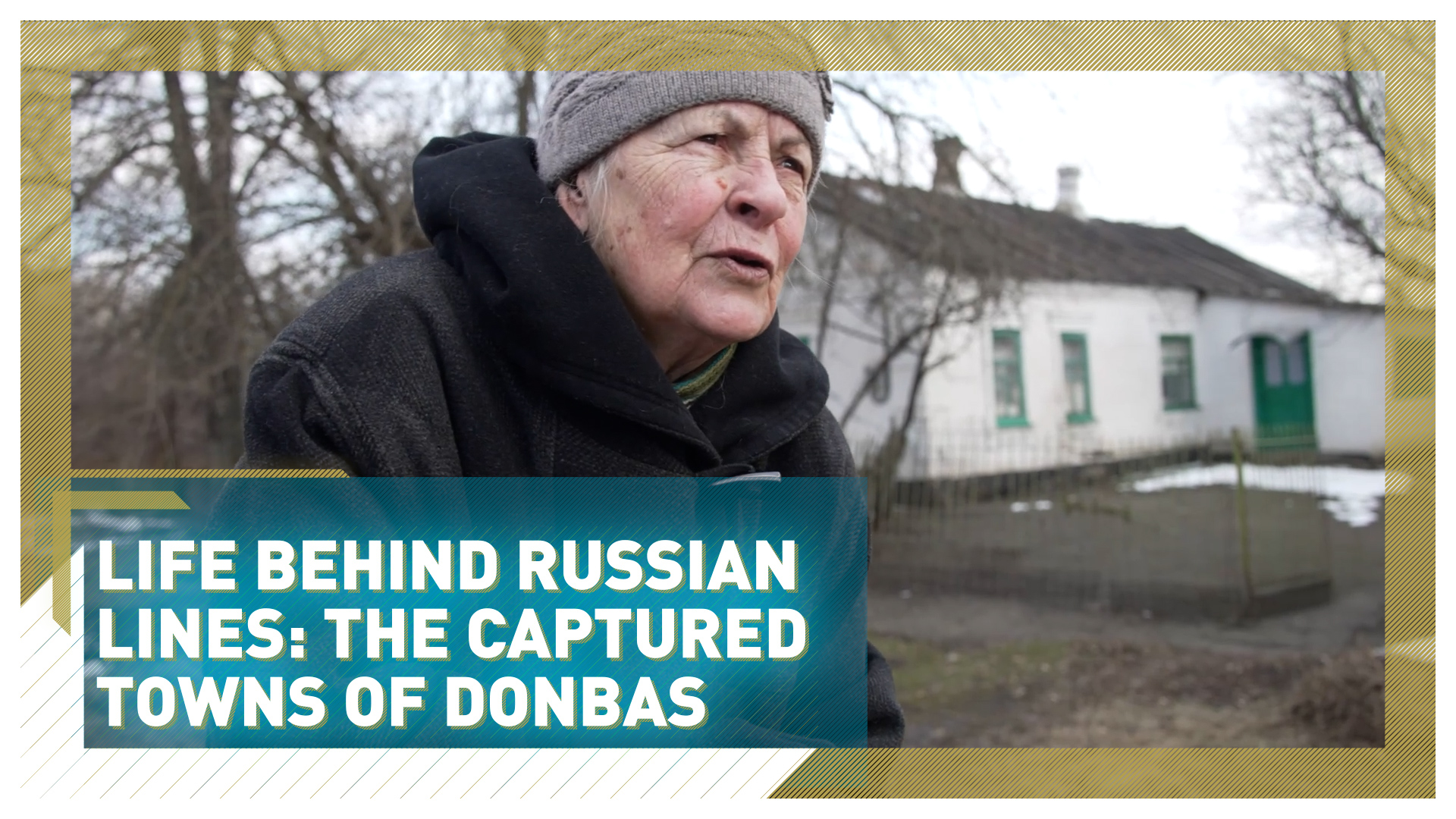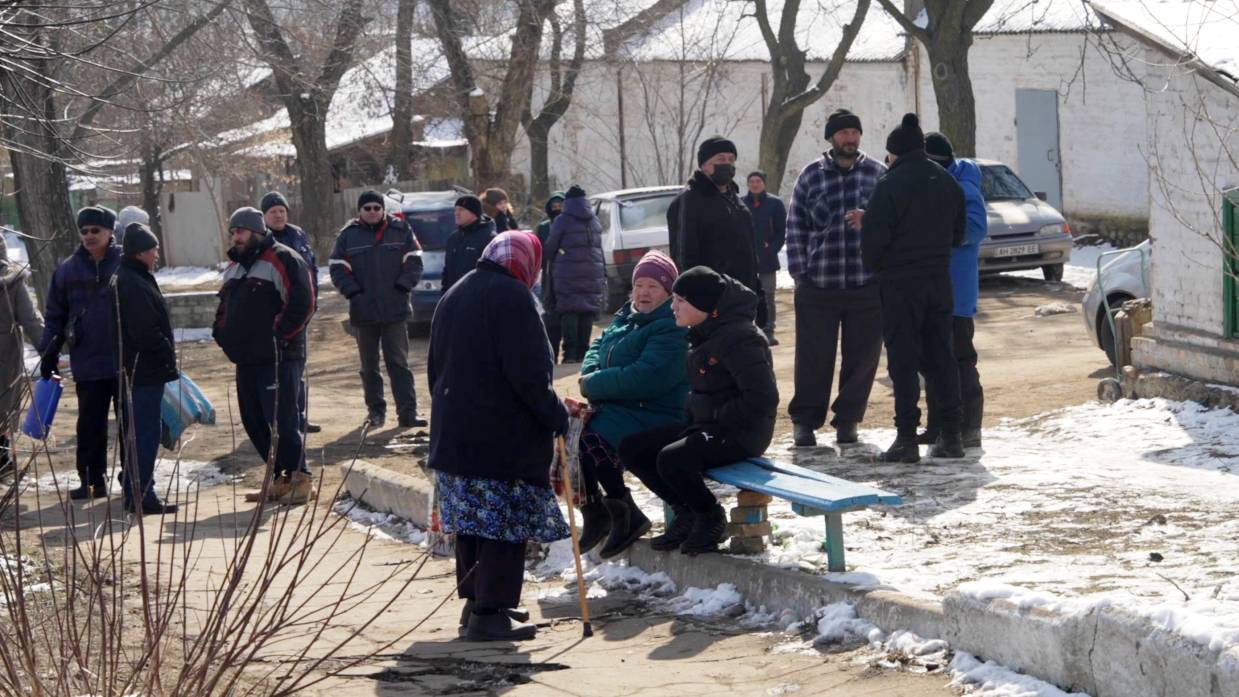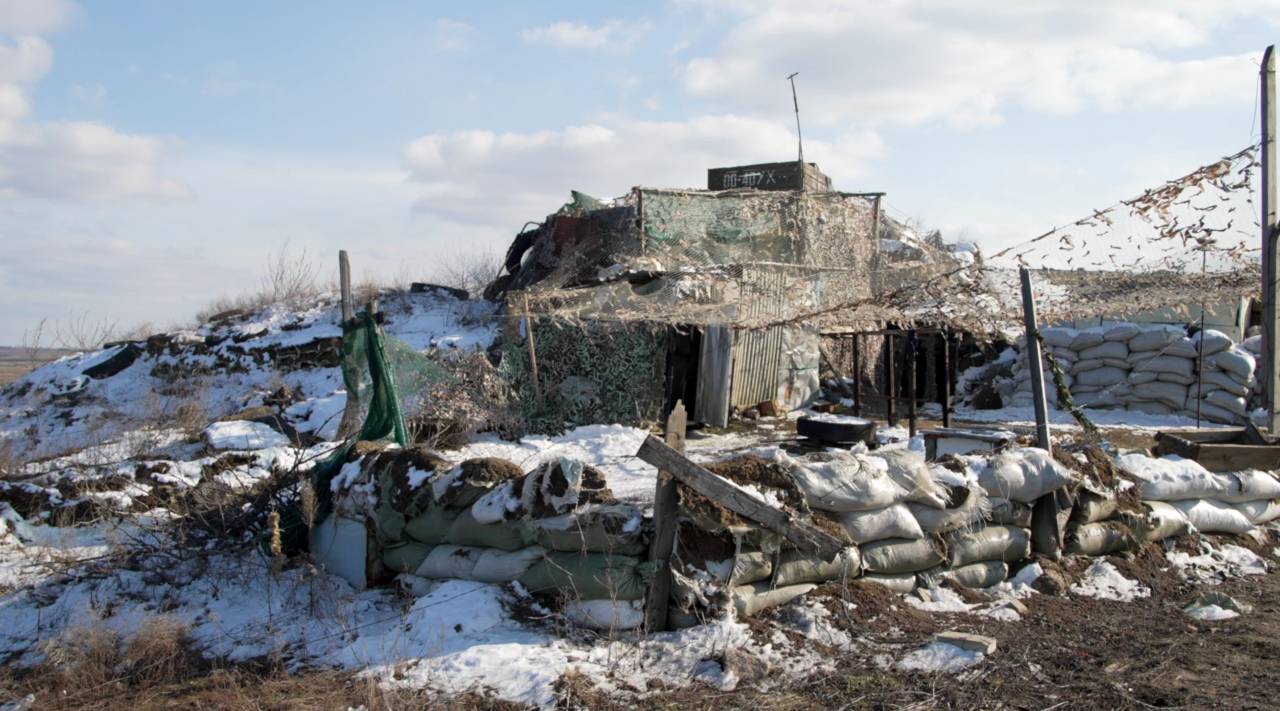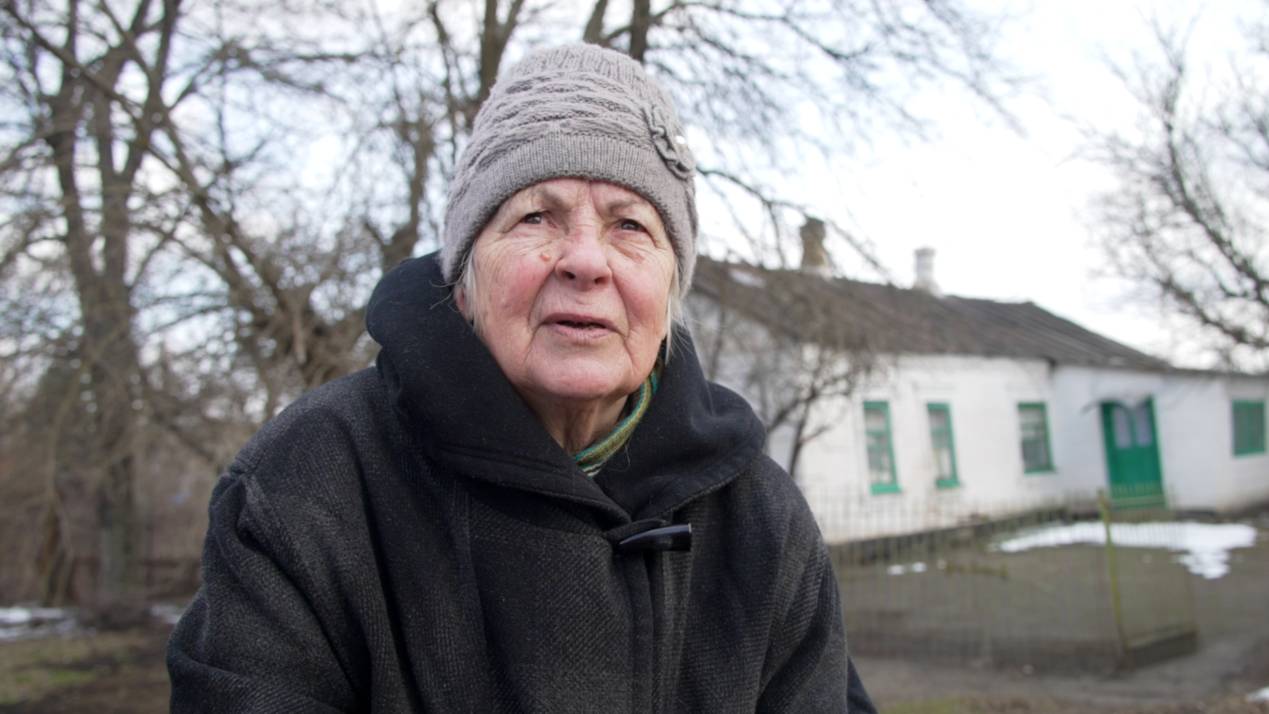02:59

It was early in the morning when a black Hyundai with huge 'Z's painted all over its body parked in front of our hotel in the city of Donetsk.
Three people were already inside, and the trunk was fully packed with plastic bags containing several kilos of basic necessities. There was hardly any space to squeeze in the back seat and almost no space for my body armor and helmet as we headed south into newly captured territory.
Our first destination was Hranitne, a small village halfway between the Donbas cities of Volnovakha and Mariupol, which had only recently been taken by pro-Russian forces.
Despite almost no fighting during its capture, the humanitarian situation remained dire there, prompting a relief organization from the pro-Russian separatist statelet of the self-proclaimed Donetsk People's Republic (DPR) to deliver much needed aid.

Locals are learning to live under the new territorial control of the self-proclaimed Donetsk People's Republic. /Aljosa Milenkovic/CGTN Europe
Locals are learning to live under the new territorial control of the self-proclaimed Donetsk People's Republic. /Aljosa Milenkovic/CGTN Europe
Road to Hranitne
It was almost a three-hour-ride on the rough and muddy roads to Hranitne, as the main roads were still under constant fire by Ukraine's forces. At first, the driver showed an open distrust to the only foreigner in the car - me.
As we neared the fighting in Volnovakha, there were more and more Ukraine military trenches and bunkers, none which had seen any fighting, but seemingly abandoned by the Kyiv forces. The regular program on the radio was interrupted with an announcement that called for Ukraine soldiers to surrender.
READ MORE:
Can you measure intelligence?
'Stop this war!' A plea from a town of horror
What are hypersonic missiles?
The road was interspersed by countless numbers of tanks, IFVs, self-propelled guns, and supply trucks belonging to the DPR military vehicles belonging to DPR militias. Some of the columns were a kilometer long.
With the DPR forces operating the area, there wasn't a single Russian soldier or military vehicle in sight. The majority of the soldiers were above 35 years old and very few of them younger than 30.

Between Donetsk and Mariupol, many former Ukrainian military outposts have been abandoned. /Aljosa Milenkovic/CGTN Europe
Between Donetsk and Mariupol, many former Ukrainian military outposts have been abandoned. /Aljosa Milenkovic/CGTN Europe
Behind Russian lines
Entering Hranitne, we were met by another abandoned Ukrainian military checkpoint. Locals gathered in the village center, anxious over the lack of electricity and cut off from the latest news.
People are unsure about what will happen to them next. They still pay in local shops, which are still open, with Ukrainian hryvnias. Their cars still have Ukrainian license plates.
However, the flags in front of the school and other institutions here have been changed. On the wall of the local school, there is still a board saying 'Ukraine', but the flag of the self-proclaimed DPR is on the poll at the school's entrance.
For some locals, it is a sign of huge relief, according to 19-year-old Vladislava Rezunova.
"I only came here to visit my family for a day. I was supposed to go back to the school, but on February the shooting started and I couldn't leave the village," she said.
"I was afraid for my life, so I stayed here and that's very good for me." she added. "I'm now on territory that's important to me. We have waited for this for the last eight years."

Many people living in the newly captured villages are older. /Aljosa Milenkovic/CGTN Europe
Many people living in the newly captured villages are older. /Aljosa Milenkovic/CGTN Europe
Zaporozhskoe
After Hranitne, we headed further in the direction of Mariupol, stopping at the village of Zaporozhskoe, only recently captured by pro-Russian forces. Less than a hundred people live there and no one is younger than 50.
In the middle of the road in front of an old house, we met 84-year-old Yustina Andreevna. "There are no shops, no doctors, not even people. Just the birds in the sky," she says, as the DPR volunteers hauled bags of aid into her home.
"No electricity, not even the phones are working," she adds. "We don't know even what time it is."
Further down the road, we met a 79-year-old Grigoriy, who is also taking care of his disabled wife. Their daughter lives in Russia, and there is no means to let her know that they are alive.
"Poor thing, she most likely cries now, not knowing whether we are alive or not," says Grigoriy. "But who knows, maybe she'll see us now on TV."
The closest shop to Zaporozhskoe is two kilometers away, but even that is now closed. That means humanitarian relief from Donetsk is currently the only way to get basic necessities to these people, forgotten in the conflict.

